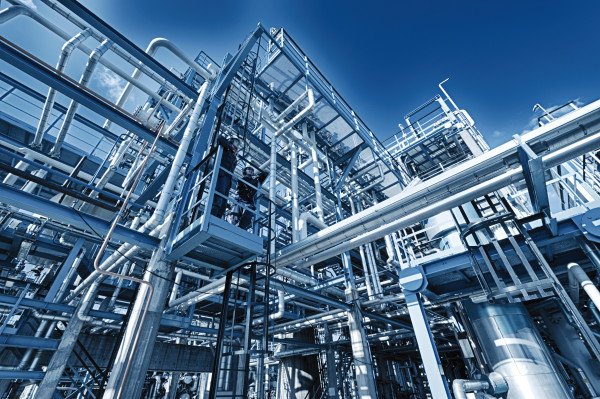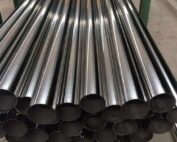February 13, 2023
Classification of Pipes (How to Classify Pipes?)
Pipes are an important industrial material used in many fields. Various liquid or solid materials are transported through pipes. Pipe standards show the dimensions and thickness of the pipes and the plan of the pipes. There are various elements that make up the main system of a pipe. Apart from the materials that make up the pipe, the standards constitute the integrity of the system, the issues and principles used in design and construction. The systems in the pipes consist of components such as flanges, gaskets, bolts, valves, strainers, expansion vessels.
What is a Pipe?
Pipes are used as a wide range of fluid and solid transportation equipment used in industry. They are generally cylindrical, tubular and used in energy, construction and many infrastructure applications. Industrial pipes and rigid pipes are manufactured from a wide variety of materials and sizes for the transportation of an equally wide variety of solids and liquids.
Pipes are generally cylindrical materials with a hollow center. In addition to the transportation of liquids, these materials also enable the transportation of gasses and chemicals. Pipes are subject to pipe standards and material classifications, from the materials used in their production to the types of directions.

Pipe Types Used in Oil and Gas
Pipes used in oil and gas are preferred in accordance with ASTM, ASME and API pipe standards. Pipes used in such energy sectors can be used in all kinds of energy lines. Natural gas power plants and cycle power plants located inside the building are among the areas where they are used. In addition to these, it is also used in oil lines such as fuel stations.
Pipes used in natural gas are produced from steel and fine-grained steel structures. When transporting petroleum derivatives, pipes with an inner diameter of 30-120 cm are preferred. Steel or plastic pipes are also used as raw materials.
What is Pipe Classification?
Pipe standards and pipe classification are divided into various branches. These pipes are preferred for the transportation of materials such as oil, natural gas, coal gas. Pipe classification is as follows in detail:
- Pipes divided according to production methods: seamless, hot and cold rolled, cold drawn tube, extruded tube
- Pipes divided according to section shapes: simple section steel, round steel, semi-circular
- Pipes preferred according to wall thickness: thick or thin-walled steel pipe
- Pipes vary according to their intended use: mechanical industrial, chemical industry, special purpose, geological drilling
What are Pipe Properties?
If pipe properties are to be mentioned, first of all, the material of the pipe should be known. The substances that make up the pipe are the main components used during the production of pipes. In this respect, it will be possible to talk about pipes with very different properties. Steel pipe is a type with different properties that comes to mind first in this regard. Copper pipes are used to supply hot or cold water. It is resistant to heat. Aluminum pipes are known as the most easily shaped pipe type. It has a very high conductivity.
Pipe Components
Pipe standards consist of various components. The general elements that make up the pipe components consist of various materials. These components consist of various sizes and widths and different materials. The elements that make up the pipe components are as follows:
- Free, blind, weld neck flange
- Parts of the pipe clamp
- Use of gaskets for sealing
- Support known as pipe support
- Double screw clamp for quick locking mechanism
- Strainer to ensure cleanliness
- Fluidizing valve
These materials that make up the pipe components must meet national standards. The integrity of the pipe system also depends on the registration of the manufacturer. However, pipes are generally produced according to common national standards.
Pipe System
Piping is the systematic laying of gaseous or light solid fluids, especially in the industrial field. In order to transport these objects through the pipe, an organized pipeline or lines are needed. Pipe systems can consist of different types of pipes. Different systems are preferred according to the needs of the area to be used. Pipe systems can be controlled by various regulators or different installations depending on the type of pipe used. These installations and systems are very important. Pipe systems used especially in the industrial field are among the important factors affecting performance.
Pipe Size
Pipe standards and systems consist of many different options. The components that determine pipe standards also vary for different pipe types. For example, the components of a pipe will vary according to the main material used in the pipe. Steel and copper pipes have different criteria.
Pipe size also depends on the type of pipe to be used and the area where the pipe is needed. After providing such information, the process will be completed with the desired pipe size. Depending on the fact that the pipes are made of different materials, their diameters will vary. For this reason, the type of pipe needed must be determined first.
What are Small Diameter Pipe and Large Diameter Pipe? What are the Differences?
The usage areas and main components of small diameter pipes and large diameter pipes are quite different from each other. Small diameter pipes are less preferred than large diameter pipes in industrial areas. Diameters, which are the main feature of pipes, are very important in determining the area to be used.
Large diameter pipes are mostly used in areas where high density materials need to be transported. There are different types according to their outer diameter and thickness. The differences between them are quite obvious. Small and large diameter pipes undergo changes from the first production stage. Large pipes should be used in large and wide areas such as underground. Small diameter pipes are preferred in areas such as plumbing because they are robust and do not take up too much space. These are the biggest factors in the different preference of these two pipe diameters.
Pipe End Types
Pipe end types play a major role in the design of pipe systems. In accordance with pipe standards and requirements, pipe ends play a major role. Pipe end types are as follows:
- Auger pipe end
- Beveled pipe end on both sides
- Bevel Big End
- Pipe end with one end curved
- Beveled pipe end for welding
- Structure straight pipe end
- Threaded pipe end
- Pipe end with large thread
- Pipe with thread at one end

Plain End Pipes
Plain end tubes are coated to protect the steel against impacts and indoor moisture. Plain end pipes are one of the most durable end types. It is the most preferred pipe end because of its low cost. Plain end pipes are mostly used in marine applications, construction, domestic plumbing, and water lines. It is also used in cases where the metal needs to be protected against corrosion, such as electricity or flagpoles.
Pipes with Beveled Ends
Pipes with beveled ends ensure that the connection of the parts to be added to the pipe is made securely. The area of use of these pipes, which are suitable for pipe standards systems, is limited. Pipes with beveled ends are produced in different models.
Pipes with Threaded Ends
Pipes with a threaded end are an end shape that facilitates installation. Thanks to the grooves cut in a pipeline towards the end, threaded pipes are easily installed without permanent connection tools. A threaded fitting is shaped with threads that are either male or female. Male threads should be cut on the outside of a pipe or fitting, female threads on the inside of the fitting. In the case of threaded pipes and when the fitting is assembled, the two parts will be pulled together. The robust and durable nature of these pipes makes them widely used.
Use the contact details on our website to get in touch with us and ask us any queries. Sanarise Industrial can assist you with a variety of your needs for diverse iron and steel pipes’ products.














